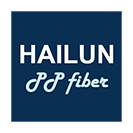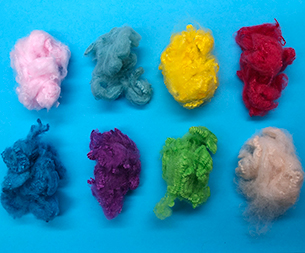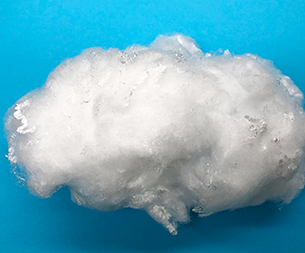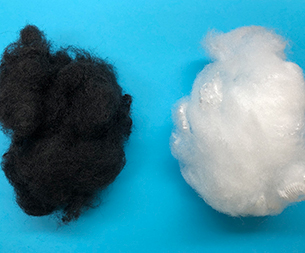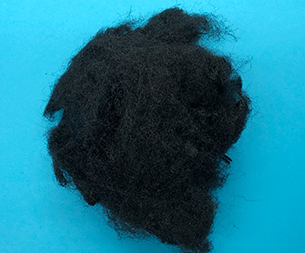Polypropylene staple fiber is a short fiber made from polypropylene resin through processes such as melt spinning, stretching, and cutting. With its light weight, high strength, and corrosion resistance, it has become an indispensable basic material in modern industry. From infrastructure to consumer goods, from traditional industries to emerging fields, the application scenarios of polypropylene staple fiber are constantly expanding, and its role is becoming increasingly crucial.
In the field of civil engineering, Polypropylene staple fiber serves as an "invisible pillar" for reinforcing soft soil foundations. Take projects such as DAMS and expressways as examples. Traditional geotextiles are prone to cracking due to uneven settlement of the foundation. However, polypropylene short-fiber woven geotextiles, with their high strength and acid and alkali resistance, can effectively disperse the load and make the settlement of the roadbed uniform. The polypropylene short-fiber geotextiles produced by enterprises such as Hubei Botao Synthetic Fiber have been widely applied in key national projects like the Three Gorges Project and the Hong Kong-Zhuhai-Macao Bridge, significantly shortening the construction period and extending the service life of the projects.
In the automotive industry,Polypropylene staple fiber is a "balancer" between lightweighting and functionality. Its density is only the lightest among commonly used fibers. When used in automotive interior fabrics and seat filling materials, it can reduce the overall vehicle weight while ensuring strength and improve fuel efficiency. In addition, the chemical resistance of polypropylene staple fibers makes them an ideal choice for automotive filter materials and sound insulation cotton, effectively resisting the erosion of oil stains, acids, alkalis, etc., and extending the service life of components.
In the medical and health care field, Polypropylene staple fiber serves as an "invisible barrier" for safety protection. By adding functional additives such as antibacterial and UV-resistant ones, polypropylene staple fibers can be made into non-woven fabric products such as medical masks, surgical gowns and baby diapers. Its hydrophobicity can prevent liquid penetration, and its antimicrobial property can reduce the risk of cross-infection. Data shows that the global market size of polypropylene staple fibers for medical and health use is growing at an average annual rate of 5%, becoming a new growth pole in the industry.
From geotextiles to automotive interiors, from filter materials to medical and health products, polypropylene staple fibers, with their core advantages of "light weight, high strength and corrosion resistance", continue to expand their application boundaries. With the tightening of environmental protection regulations and the upgrading of functional demands, the modification technology of polypropylene staple fibers has been constantly breaking through. In the future, it will play a greater role in high-end fields such as new energy and aerospace, and become a "lightweight pioneer" promoting industrial upgrading.
- How does polypropylene staple fi
- The 2025 International Textile F
- The application of polypropylene
- Cost pressure has pushed up yarn
- How to choose high-quality polyp
- New quality productive forces ar
- What are the applications of pol
- Trump announced a 100% tariff on
- Haibang polypropylene staple fib
- What impact will the implementat
- Markets
- Automotive Products
- Nonwoven Lining
- Geosynthetics
- Liquid Filtration
- Apparel and Textiles
- Hygiene Products
- Building and Construction
- Other Markets
- Contact Us
- Contact Haibang

